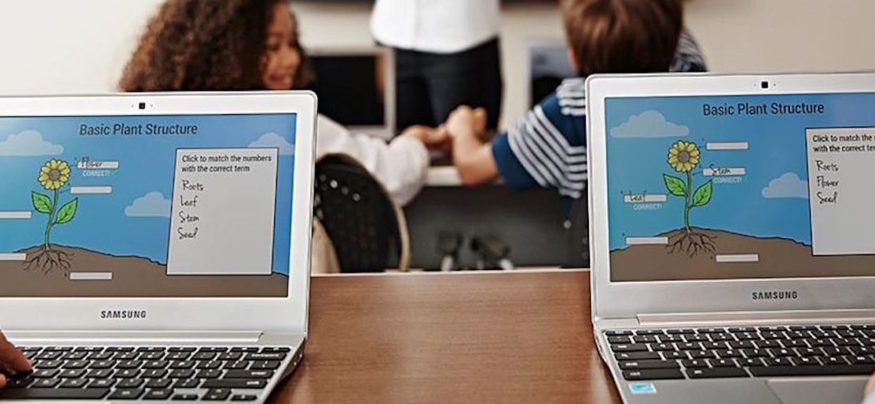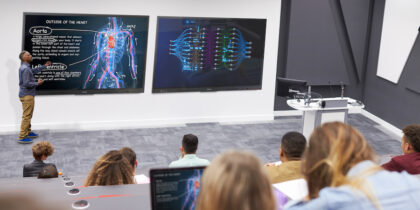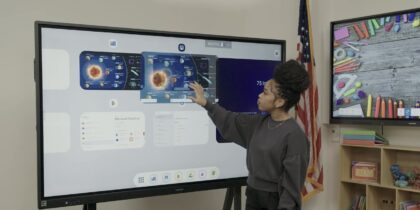For school districts exploring new approaches to student learning, we’re dedicating a three-part blog series to the key considerations in implementing education technology solutions. In this first installment of the series, we’ll concentrate on the challenges of transitioning to a 1:1 learning environment.
We’ve seen a lot of movement toward 1:1 technology, and rightly so. Research shows that the paradigm shift from traditional classrooms to computing has fostered more higher-order reasoning and critical analysis skills among students, higher levels of student engagement and greater teacher-student collaboration around instructional responsibilities, according to Scholastic. But, what happens after deciding to make the move to a 1:1 learning environment?
As 1:1 technology implementations expand rapidly and sometimes without adequate preparations, we continue to see educators and, ultimately, students struggle to successfully embrace the 1:1 learning environment. When transitioning to 1:1, school districts need to ensure educators are empowered, deployment challenges are assessed and that technology systems are accessible for students to use in and out of classrooms.
Invest in your educators, not just technology
Every day, educators embrace new teaching practices in an effort to help progress student learning, however, many school districts find that implementation is anything but seamless. In a recent study conducted by TES Global, 45 percent of teachers reported they didn’t believe that their professional development programs prepared them to assess or use technology in their classrooms. The foundation of any technology initiative should focus on teaching and learning, not the device. Simply placing laptops or tablets in front of students won’t improve learning outcomes unless your school provides continuous professional development and training for educators about how to use the device to effectively teach students.
Scholastic estimates that it typically takes up to two years for teachers to fully change their teaching practices to accommodate the opportunities afforded by a computer setting. While this change takes time, it’s worth the investment, given that increased technology access leads to more problem-based or project-based learning activities. Empower educators by training them on how to use tools first, and encourage them to immerse themselves in this environment so they can become digital learners better equipped to guide students.
At Ohio’s Groveport Madison School District, teachers were avoiding using their classroom laptops and desktops because they found they hampered student learning, rather than supporting it. When the district decided to transition to a 1:1 learning environment integrating Samsung Chromebooks, teachers were better able to use the tools and felt a sense of empowerment and connectedness that propelled teacher-student collaboration.
A bundle solution like Classroom in a Box is just one example of how school districts can ensure professional development and integrated digital curriculum are wrapped into their 1:1 program from the outset, and not treated as an afterthought.
Identify implementation roadblocks
Schools are often faced with assuming the role of a general contractor, piecing various pieces of technology together to support this learning model. Insight, an IT services company, reports that 75 percent of U.S. schools do not have the appropriate network bandwidth to support computing initiatives. When schools implement this learning model, teachers and students expect to be able to use online platforms to illustrate class concepts. Educators need to know that networks will support access so that they don’t waste instructional time waiting for systems to load.
The Groveport Madison School District serves as a great example for how districts can assess current technology challenges before transitioning to a 1:1 learning environment. The district’s relatively small IT department supports about 5,800 students and more than 400 teachers and staff members. The greatest challenge within the district was how IT would deliver the most up-to-date technology with limited resources. As the district decided to transition, they initially deployed 650 Samsung Chromebooks and then expanded to 2,500 Chromebooks as network capacity expanded. By addressing technical infrastructure challenges head on and easing into IT changes, the district minimized obstacles during the transition.
For CTOs specifically, instituting a technology vision committee can help school districts determine where to invest time, and help to identify potential challenges both in, and out of the classroom. For example, what percentage of students could be hindered from completing work at home due to lack of Wi-Fi access? This concern should be addressed by the committee before technology integration takes place.
Managing device use
While students may occasionally get distracted by new tools, educators can incorporate creative ways to guide learning. Tidebreak’s solutions support a wide variety of different teaching approaches, making it simple for faculty to engage students in creative ways to enhance learning. Another option for educators is to seek peer advice for managing device use in the classroom. Educators have the opportunity to collaborate with one another through the SMART amp enabled Samsung Chromebook. This online professional development bundle and instructional technology solution provides teachers the support they need to foster their students’ collaboration and co-creation on devices, while giving the teacher real-time insight into the learning process.
1:1 transitions require preparation
The transition from a traditional classroom setting to 1:1 learning environment does not happen overnight. Of course, when investing in new technology, administrators want to see these digital tools immediately in use, however, you must allow teachers some learning and growing time as they integrate 1:1 devices into curriculum. The goal shouldn’t be about enforcing technology integration in haste, but to create a platform for collaboration with a launch schedule guided by clear objectives and goals for each teacher.
Samsung guides schools every step of the way with implementation and ensures schools think about deploying end-to-end solutions, not just specific devices or technologies. By providing schools complete solutions in conjunction with partners, we see schools succeed when making the switch.
The need for preparation remains top of mind as school districts learn to successfully embrace 1:1 learning. If administrators ensure educators are empowered, deployment challenges are assessed and that device management regulations are in place, they can negate implementation struggles and feel empowered to achieve smooth transitions to 1:1 learning environments.
Keep a look out for the second installment of this education technology series concentrated on blended learning environments.







